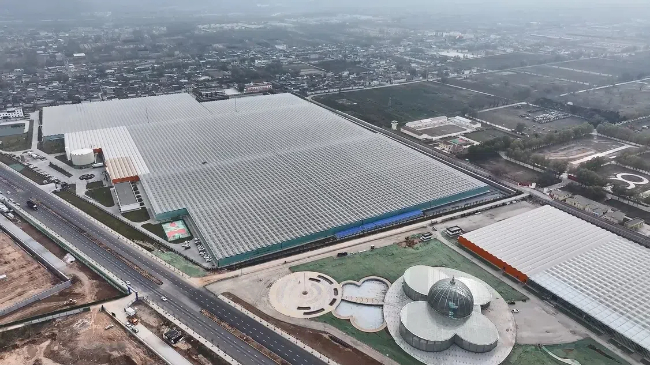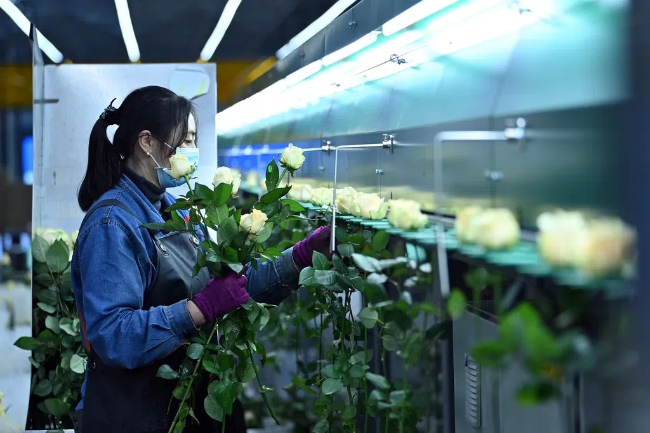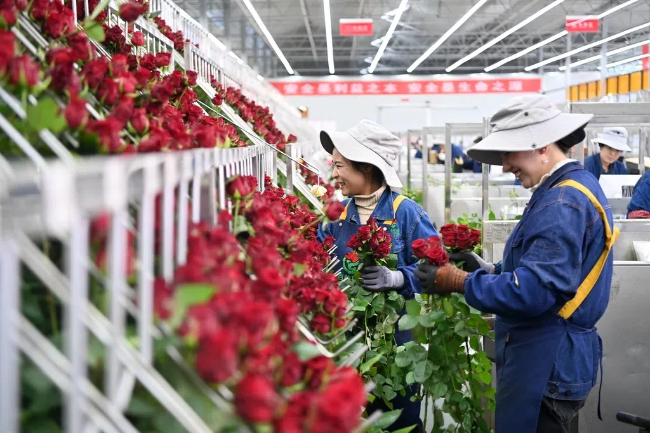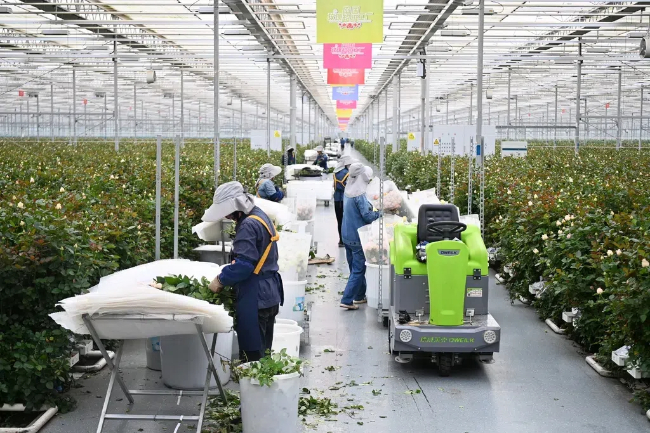Blossoms of Linxia: A fragrant journey across borders


Cut roses from Linxia Hui autonomous prefecture, Gansu province, are making their way to Belt and Road countries via cold chain transportation, becoming a new highlight of foreign trade. From January to October this year, Linxia's rose exports exceeded 690,000 stems.
Located between 34 and 36 degrees Celsius north latitude with 2,700 hours of annual sunlight, Linxia has leveraged its ideal climate to establish the Baiyi Yinong International Flower Port. This "super factory" features China's largest single-unit smart greenhouse, equipped with advanced lighting and temperature control systems, growing over 10 varieties including Naomi and Avalanche roses. Since its operation began in October 2022, the facility produces 200,000 roses daily, with an annual output of 60 million stems.

"Our primary markets are Kazakhstan and Russia, and we're gradually expanding into Kyrgyzstan and other Belt and Road countries," says Li Zetian, deputy general manager of Baiyi Yinong International Flower Port Co., Ltd. "We aim to explore more markets through this important export channel."
The key to preservation lies in rapid cooling and temperature control during transport. "Fresh-cut flowers must undergo immediate vacuum pre-cooling for dormancy," explains Liu Jianguo, Post-harvest Manager. "During transportation, refrigerated trucks maintain temperatures between 2-3 degrees Celsius, monitored remotely. Upon arrival overseas, flowers can gradually revive at room temperature."

To address challenges in flower preservation and transportation, Lanzhou Customs regularly visits the facility to explain phytosanitary requirements of destination countries, provide technical training, and guide the establishment of quality control systems.
According to Xie Yan, director of Comprehensive Business at Jincheng Customs, "From January to October, Lanzhou Customs has supported the export of over 690,000 stems of fresh-cut flowers from Linxia to Belt and Road countries including Russia and Kazakhstan, and exports value has increased by approximately 376 percent year-on-year."
The flower port's second and third phases are under construction, with phase four to six in planning. Upon completion, the facility will cover 3,000 mu (494 acres) with an annual production capacity of 700 million roses.




























